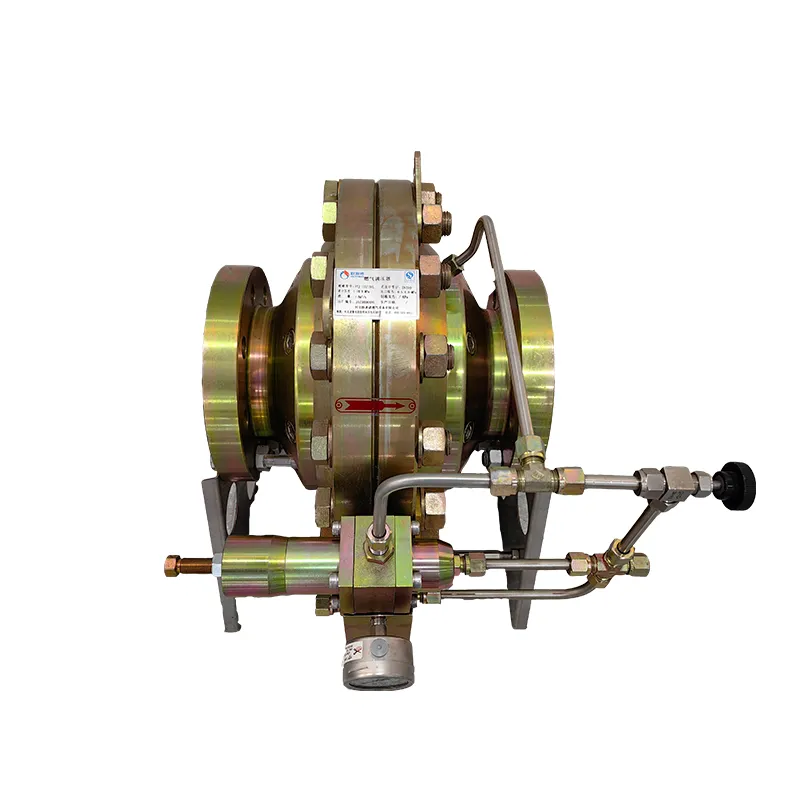
Dec . 16, 2024 09:34
Back to list
Understanding the Functionality and Benefits of Pressure Reducing Valves in Fluid Systems
Understanding Pressure Reducing Valves A Key Component in Fluid Systems
A pressure reducing valve (PRV) is an essential component in various fluid systems, particularly in water supply networks and industrial applications. Its primary function is to reduce the inlet pressure to a predetermined outlet pressure, ensuring the safe and efficient operation of downstream equipment. This article explores the working principle, applications, benefits, and maintenance of pressure reducing valves.
Working Principle of Pressure Reducing Valves
The operation of a pressure reducing valve is based on a simple yet effective mechanism. Typically, the valve consists of a spring-loaded diaphragm that responds to changes in pressure. When the fluid enters the PRV at a higher pressure than desired, it pushes against the diaphragm. As the diaphragm moves, it opens the valve to allow fluid to flow through while simultaneously compressing the spring.
The spring exerts a counterforce that regulates the valve's opening. When the outlet pressure reaches the set point, the diaphragm's movement decreases, causing the valve to close slightly, thus maintaining a consistent and stable outlet pressure. This feedback loop ensures that fluctuations in the inlet pressure do not adversely affect the system's performance.
Applications of Pressure Reducing Valves
Pressure reducing valves are widely used across various sectors. In residential and commercial water supply systems, PRVs prevent excessively high pressure from damaging pipes, fixtures, and appliances. By maintaining a steady water pressure, they enhance the longevity and efficiency of plumbing systems.
In industrial settings, PRVs play a crucial role in process control. They are used in steam systems, gas distribution, and hydraulic systems, ensuring that equipment operates within safe pressure limits. For instance, in a steam system, maintaining the correct pressure is vital for ensuring the efficiency of heat exchangers and preventing equipment failures.
Moreover, PRVs are instrumental in irrigation systems where they help distribute water evenly across large areas. By controlling the pressure, these valves enable consistent watering, enhancing crop yields and conserving water resources.
pressure reducing valve

Benefits of Pressure Reducing Valves
Employing pressure reducing valves in fluid systems offers numerous benefits. Firstly, they enhance safety by preventing overpressure situations that could lead to pipe bursts or equipment damage. Ensuring the correct pressure helps maintain system integrity, reducing repair costs in the long run.
Secondly, PRVs contribute to energy efficiency. High pressure can lead to increased energy consumption, particularly in heating and cooling systems. By controlling the pressure, PRVs optimize energy usage, thereby lowering operational costs.
Additionally, these valves minimize water wastage. In systems where high pressure can lead to leaks or inefficient flow, PRVs ensure that water is delivered consistently and effectively, supporting sustainability efforts.
Maintenance of Pressure Reducing Valves
Proper maintenance of pressure reducing valves is crucial for their longevity and performance. Regular inspections should be conducted to check for signs of wear, corrosion, or sediment buildup. It's important to ensure that the valve's set point remains accurate; adjustments may be necessary over time due to changes in system dynamics or wear to internal components.
Routine cleaning and lubricating moving parts can prevent malfunctions and ensure smooth operation. In cases of failure, it is often more cost-effective to replace the valve rather than attempting extensive repairs, particularly in high-demand applications.
Conclusion
In summary, pressure reducing valves are vital components in fluid systems that enhance safety, efficiency, and sustainability. Their simple design and reliable operation make them indispensable in various applications, from residential plumbing to complex industrial systems. By understanding their functionality and maintaining them properly, users can ensure optimal performance and longevity of their fluid systems. As technology continues to advance, the role of pressure reducing valves will undoubtedly evolve, further solidifying their importance in modern engineering.
Next:
Latest news
-
Safety Valve Spring-Loaded Design Overpressure ProtectionNewsJul.25,2025
-
Precision Voltage Regulator AC5 Accuracy Grade PerformanceNewsJul.25,2025
-
Natural Gas Pressure Regulating Skid Industrial Pipeline ApplicationsNewsJul.25,2025
-
Natural Gas Filter Stainless Steel Mesh Element DesignNewsJul.25,2025
-
Gas Pressure Regulator Valve Direct-Acting Spring-Loaded DesignNewsJul.25,2025
-
Decompression Equipment Multi-Stage Heat Exchange System DesignNewsJul.25,2025

